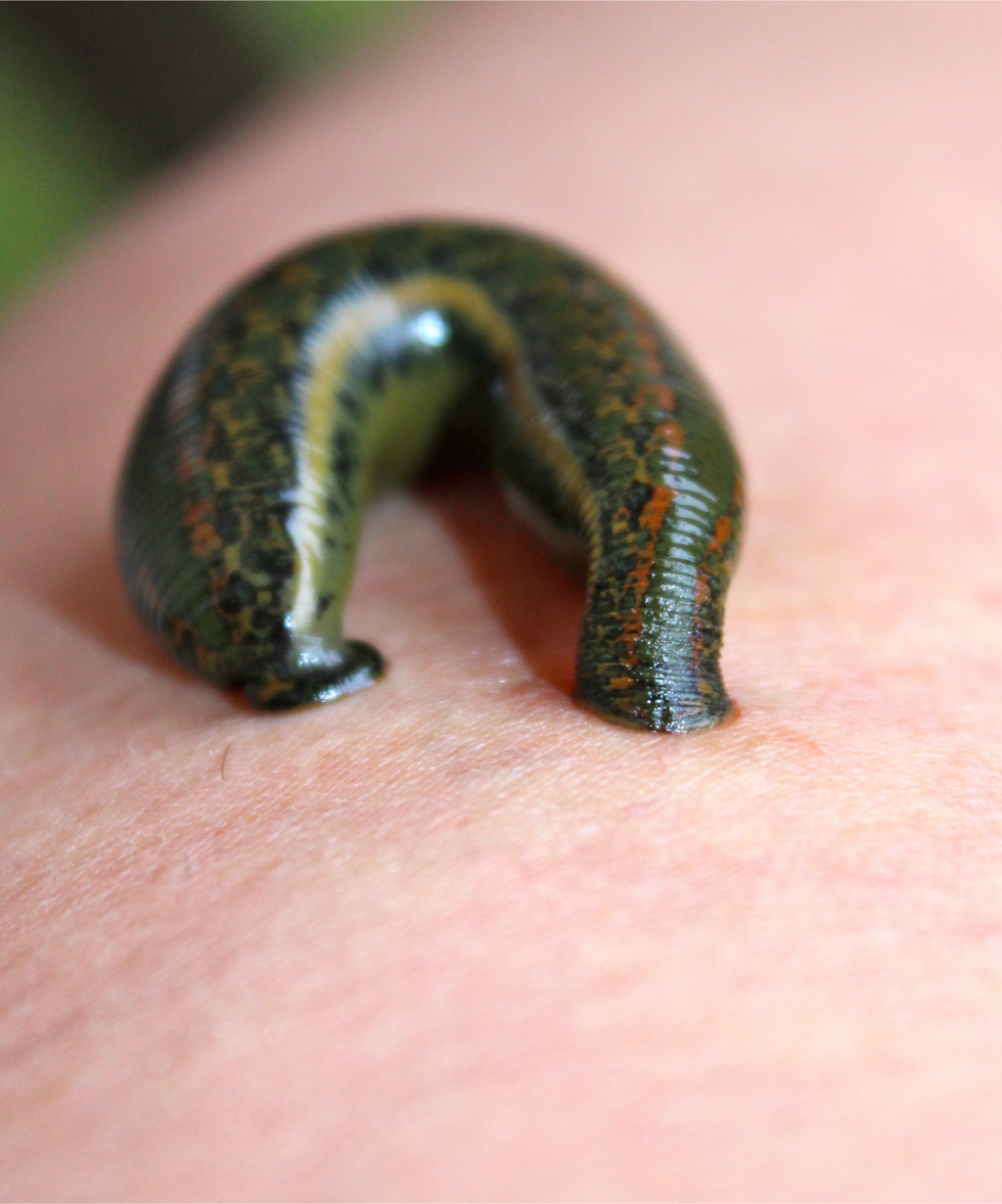Sergey Salushchev is a historian of the Caucasus region. His scholarship conceptualizes the Caucasus as a permanent borderland, a site of cultural exchanges, transnational commercial networks, contested memory, and imperial rivalries. Sergey’s dissertation investigates the history of slavery, the slave trade, and abolition in the nineteenth century Caucasus under Russian imperial rule.
Supply chain disruptions, scarcity of commodities, and inflation wrought by the global pandemic are on everyone’s mind nowadays. Woes of this kind are, of course, nothing new. But if you think that a shortage of microchips for your dilapidated Chevy is bad, consider the following. In the nineteenth century, the world experienced a great shortage of one of the most precious commodities of the time – medicinal leeches. But where many saw adversity, others recognized opportunity. Such recognition brought merchants like Pietro Battso from the Kingdom of Sardinia to the South Caucasus in 1844. The freshwater lakes, ponds, and ditches of Surmalinskiĭ (Surmalu) uchastok (district) located in the Yerevan Uezd of the Caucasus Viceroyalty were teeming with leeches hungry for human blood. For Pietro, this represented an untapped potential to fill the lucrative gap in the supply-to-demand imbalance that gripped European leech markets.
Truly, medicinal leeches are the unsung heroes in the history of global capitalism. Growing demand for leeches in the nineteenth century uplifted rural economies and created entire professions, like "leech gatherer." As medicinal leeches rapidly transformed into a profitable global commodity, huge fortunes were made. For example, at the turn of the nineteenth century, a buyer in England could purchase one hundred leeches for two shillings and six pence; by 1808 the price had risen to thirty shillings. In France, foreign and domestic demand created a leech trade that quickly became an important branch of the country’s economy. Between 1814 and 1834, the price of French medicinal leeches soared from five francs to over 100 francs per thousand leeches. The promise of enormous profit margins motivated Pietro Battso to establish a trade route from the South Caucasus to the great cities of France.
The archives tell us that Pietro Battso arrived in the Yerevan Uezd on 30 August 1844. Wasting no time, the Sardinian merchant contracted delivery of approximately 500 Oka or approximately 680 kilograms of leeches from local villages for shipment to France. The villagers sold each Oka of leeches to the merchant for the price that ranged between 1.20 and 1.50 silver rubles.
The industrial scale of leech harvesting did not escape the attention of Russian imperial government. Alarmed by the unbridled collection of leeches, the Head (nachal’nik) of Yerevan Uezd took the drastic action of suspending leech exports and seeking the advice of his superiors on how to handle this slimy situation. The response from the Office of the Caucasus Viceroy arrived on 5 September of the same year. The commander-in-chief in the Caucasus clarified that the government had no standing restrictions on leech exports from privately owned estates. The one exception to this rule were the state-owned lands where merchants seeking to exploit the rich repositories of leeches were required to obtain the permission of the state in the Viceroyalty’s capital, Tiflis, and pay fees directly into imperial coffers. So, by November 1844, the Sardinian merchant Pietro Battso had received the contracted weight of the Caucasus leeches in full, thereafter transporting the bloodthirsty worms to France.
Other foreign merchants took heed of Pietro Battso’s successful dealings in the South Caucasus and proceeded with building their own regional supply networks. In 1845, a Belgian Consul-General, whom the archives mention only by his last name, Sharno, opened a personal leech harvesting enterprise in the Armianskaia oblast’ (Armenian region) while maintaining permanent residency in the Ottoman port city of Trabzon. The consul’s business was reportedly so profitable that in 1846 he approached the tsarist administration in Tiflis with a bold proposition: he sought to secure exclusive rights to harvest, sell, and export leeches in the region. In return, the Belgian consul offered to pay the state a handsome fee. For the cash-strapped imperial authorities in the Caucasus, Sharno's was an undoubtedly tempting offer. Yet after studying the proposition, the Caucasus Viceroy denied the consul’s request (see Fig. 1 below).
[gallery columns="2" size="medium" ids="7276,7277"]
Archival copy of the memo issued in 1846 by the Minister of Internal Affairs in the Georgia-Imeretia Governorate at the behest of the Caucasus Viceroy, Prince Vorontsov, denying Belgian Consul, Sharno, exclusive rights to the procurement, sale, and export of medicinal leeches.
Source: Sakartvelos Erovnuli Arkivi (საქართველოს ეროვნული არქივი).
The Viceroy, Prince Vorontsov, concluded that the “capture, sale, and export of leeches now constitutes a kind of industry for the local population; granting exclusive rights to a single person might constrain this venture in its very infancy.” Thus, when it came to leeches, the free market reigned in the South Caucasus!
Unfortunately, all good things must come to an end. And so, as Robert G. W. Kirk and Neil Pemberton wrote in their 2003 study, Leech, “as the nineteenth century progressed, leeches became both the symbol and victim of capitalism.” In the early 1800s, bloodletting by means of medicinal leeches had become the main treatment method within humoral medicine. The popularity of the treatment stimulated constant demand on the international market and devastated the population of leeches in different parts of the world. High demand for medicinal leeches in Ireland, for example, led to their extinction in the country. By the late nineteenth century, as Roy T. Sawyer writes, “both England and France had long exhausted their commercial sources of domestic leeches, and were heavily involved in importing great quantities from elsewhere.” By 1848, even the Russian government had imposed high tariffs on the export of leeches, declared certain months closed to collecting, and impeded the foreign traders in a variety of other ways.
“It’s been said and done,” is what popular singer, actor, and producer Selena Gomez might declare had she considered writing a PhD thesis on the history of the global medicinal leech trade. We would be wise, of course, not to expect the singer to write a love song about leeches. Yet rich historiography on the topic of global commerce in leeches notwithstanding, historians have unjustly overlooked the South Caucasus as a region that played a prominent role in satisfying Europe’s seemingly insatiable craving for leeches.



